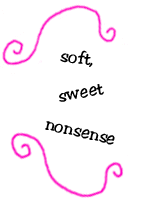 Well, darling young and old lovers, here’s one that I originally posted here as an obligatory Valentine’s Day excerpt. The book it is pulled from is Correct Social Usage, written by a number of different authors in 1907. In addition to the flowers listed in the quote below, you might be interested in the following “flower sentiments” from a chart in the same book:
Well, darling young and old lovers, here’s one that I originally posted here as an obligatory Valentine’s Day excerpt. The book it is pulled from is Correct Social Usage, written by a number of different authors in 1907. In addition to the flowers listed in the quote below, you might be interested in the following “flower sentiments” from a chart in the same book:
Hyssop = Cleanliness.
Apple-thorn = Deceitful charms.
Heliotrope = Devotion.
Lemon blossom = Fidelity in Love.
Cedar leaf = I live for thee.
Acacia = Chaste love.
Toothwort = Secret love.
Vernal grass = Poor but happy.
Gentian = Virgin Pride.
Honeysuckle = Bond of love.
For those of you you might not be expecting flowers or other treats inspired by card and jewelry companies across the nation, I suggest you buy yourself some flowers to lift your spirits ~ maybe some Celandine (“joys to come”) would be appropriate?
1907: The Language of Flowers
![]() The eloquent flower-language is well understood by lovers when they are ‘talking sentiment’ one to another. Each blossom is a letter in this alphabet. When grouped together or prettily clustered they spell ~ at least to lovers’ understanding ~ the soft, sweet nonsense which to lovers’ way of thinking is the wisest sense in the world.
The eloquent flower-language is well understood by lovers when they are ‘talking sentiment’ one to another. Each blossom is a letter in this alphabet. When grouped together or prettily clustered they spell ~ at least to lovers’ understanding ~ the soft, sweet nonsense which to lovers’ way of thinking is the wisest sense in the world.
For instance, a man may tastefully arrange a handful of pansies around a fragrant full-blown white rose and then add to his posy a moss rosebud. To the lady receiving these flowers the pansies will say, ‘You occupy my thoughts;’ the white rose, ‘I am worthy of you;’ the moss rosebud, ‘I now confess my love.’ If the lady is willing to encourage her lover to speak more plainly, she may send him a bunch of daisies. Wild daisies will tell him, ‘I will think of it,’ but garden daisies, grown less shy, will say, ‘I share your sentiments.’![]()
Source: New York Society of Self-Culture (18 authors). Correct Social Usage. New York: New York Society of Self-Culture, 1907.
~ p. 134 ~